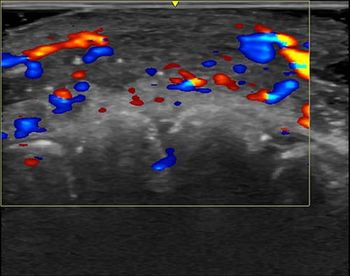
Siemens prepares P8 for U.S. sales
Siemens Medical Systems received Food and Drug Administrationapproval this month for its low-field 0.2-tesla Magnetom P8 MRIsystem. The P8 was developed by Siemens' Japanese joint venture,Siemens-Asahi Medical Systems. It was introduced into both
Siemens Medical Systems received Food and Drug Administrationapproval this month for its low-field 0.2-tesla Magnetom P8 MRIsystem. The P8 was developed by Siemens' Japanese joint venture,Siemens-Asahi Medical Systems. It was introduced into both theJapanese and European markets last year (SCAN 2/27/91).
The German medical imaging vendor will pit its low-field MRIoffering against Hitachi's 0.2-tesla and 0.3-tesla MRP imagers,which have sold briskly in the U.S. Hitachi has sold about 50of its low-field MRI systems in this market since introducingthe 0.2-tesla system nearly two years ago. Both systems use permanentmagnets.
Siemens will move at a deliberate pace in introducing theP8, said Thomas J. Miller, vice president of MRI for the U.S.The first system from Japan should arrive by early September.It is destined for the SMS R&D and engineering facility atU.S. headquarters in Iselin, NJ.
The P8 will be fine-tuned to U.S. clinical requirements beforeinstallation of the first clinical units later this year. Siemenswants to ensure the bugs are worked out before the MRI systementers the field, he said.
"Our competition in this market is Hitachi," Millertold SCAN. "We are arriving later, so we have to be better.It is a simple strategy. We cannot start with beta sites (usingan unready scanner). We have to go out with a system that is seento be better than Hitachi."
Siemens does not have a 0.5-tesla mid-field MRI system andhas no plans to introduce one, he said. The low-field P8 is betterpositioned than mid-field scanners as an economic MRI alternative,while the Siemens 1- and 1.5-tesla systems cover the high endof the market.
"We have always believed that the 0.5-tesla (MRI system)is a poor product choice. It is not low enough in price or sitingand operating costs to appeal to low-throughput sites, and notpowerful enough to appeal to users with economic constraints whowant 1.5-tesla performance," he said.
Siemens expects to price the P8 at slightly above the Hitachiprice, placing it around the $1.3 million level. The reputationand backing of the world's second largest medical vendor shouldhelp support the price differential, he said.
Demand for low-field systems may increase with governmentrestrictions on referring-physician investments in imaging centers.The P8 covers costs at two to three patients a day.
"It is a natural (product) for referral-restricted situations,"Miller said.
While some users may purchase the P8 as a second system behinda high-field unit, Siemens does not anticipate that this willbe the prime market for the system. There would likely be pressurefrom referring physicians to provide images from the high-fieldsystem in such cases, he said.
The best market opportunity is expected in low-throughput,geographically isolated sites and those that are pinched economically,Miller said.
"There will always be an image quality gap between the0.2- and 1-tesla systems, but, in relaxed throughput situationswhere you can spend a little more time with the patient, you canmake up that gap," he said.
Newsletter
Stay at the forefront of radiology with the Diagnostic Imaging newsletter, delivering the latest news, clinical insights, and imaging advancements for today’s radiologists.




























